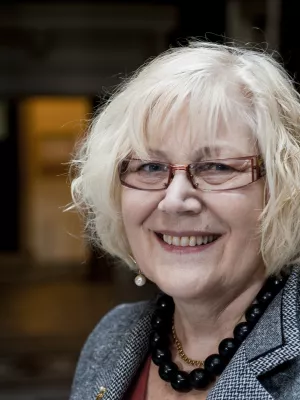
Ingalill Rahm Hallberg
Professor emerita

Older people in Sweden with various degrees of present quality of life: their health, social support, everyday activities and sense of coherence.
Author
Summary, in English
Public health policies in most European countries are concerned with how to keep older people living independently with a qualitatively good life in the community as long as possible. However, knowledge about what may characterise those seemingly 'healthy' older people is sparse. The aim of the study was to investigate the characteristics of a sample of people (75+) reporting various degrees of Quality of Life (QoL) with respect to QoL in different areas, as well as self-rated health, health problems, social support, everyday activities and sense of coherence. A postal questionnaire was sent out in spring 2001 to a randomly selected population-based sample (n= 600) in the southern parts of Sweden. A two-step cluster analysis was performed (n= 385, mean age 84.6, SD = 5.7) with 'present QoL' as clustering attribute. Three groups were disclosed, classified as high, intermediate and low present QoL, of which 33.8% could be regarded being at risk of low QoL. Those with low present QoL (18.4%) were the oldest and most vulnerable, a majority were women with 'poor or bad' self-rated health, high frequencies of health problems, low total QoL, low social support and sense of coherence and less physically active. Those with high present QoL (47.8%) reported more 'excellent or good' self-rated health, physical activity, satisfactory social support and higher sense of coherence and total QoL than the other two groups. Those with intermediate present QoL (33.8%) had more of 'poor or bad' self-rated health, more health problems were less physically active, had lower total QoL and sense of coherence, and less social support than those with high present QoL. The sample seemed to reflect the ageing process in that the respondents were at different stages of ageing. However, the fact that the level of social support, sense of coherence and self-rated health followed the same curve as QoL may indicate that some are more vulnerable to low present QoL given the same health and these should be targeted in preventive programmes since they report low QoL.
Department/s
- Department of Health Sciences
Publishing year
2006
Language
English
Pages
136-146
Publication/Series
Health & Social Care in the Community
Volume
14
Issue
2
Full text
- Available as PDF - 185 kB
- Download statistics
Links
Document type
Journal article
Publisher
Wiley-Blackwell
Topic
- Gerontology, specializing in Medical and Health Sciences
Status
Published
ISBN/ISSN/Other
- ISSN: 0966-0410

